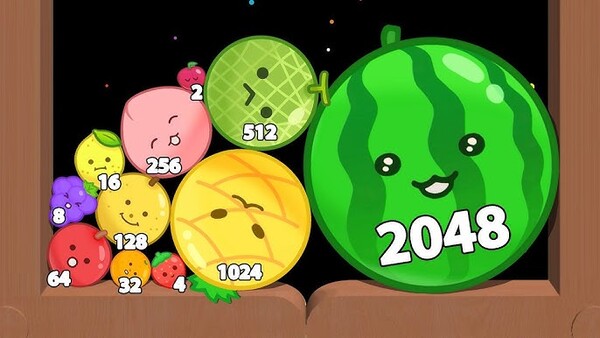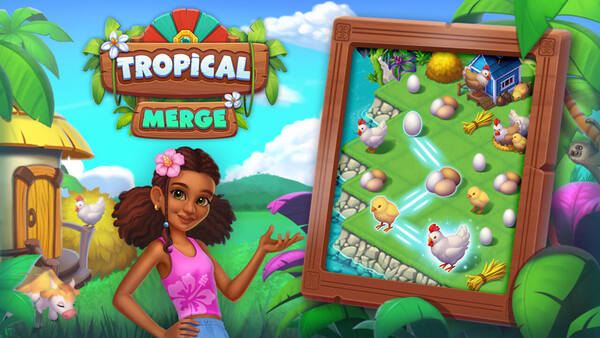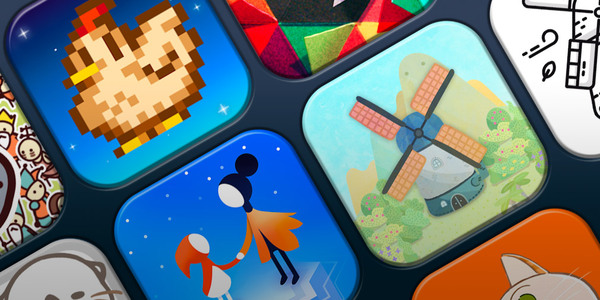Gacha Club Games Explained: A Complete Guide to Mechanics, Trends, and Controversies
Gacha games have taken the world by storm. Originating from the Japanese word "gachapon" — the sound of a capsule toy machine — the term now refers to a style of mobile and online game that uses randomized "pull" mechanics to give players rewards. What was once a niche mechanic has grown into a massive billion-dollar industry, influencing everything from mobile gaming design to monetization models across the world.
In this comprehensive guide, we’ll walk through the evolution of gacha games, how their systems work, what psychological strategies they employ, and their legal and ethical controversies. Whether you’re a newcomer or a seasoned gacha veteran, this article will help you better understand the game design, the business, and the risks behind the appeal.
1. The Origins of Gacha club Games
Gacha mechanics originated from physical capsule toy machines in Japan during the 1960s. These machines would dispense random toys inside capsules when coins were inserted. Over time, this idea of randomness for a reward found its way into video games.
The first digital gacha systems appeared in Japanese mobile games in the late 2000s. Titles like Dragon Collection and Puzzle & Dragons implemented systems where players could use in-game currency to summon characters or items with varying rarities. This mechanic became wildly popular in East Asia and eventually found its way to Western markets.
By the 2010s, gacha had become a dominant mechanic in mobile RPGs, especially in games developed by companies like GREE, Cygames, and Bandai Namco. This popularity led to international hits and eventually to global successes such as Genshin Impact and Fate/Grand Order.
2. How Gacha club Systems Work
At the core of every gacha game is a random draw system. Players spend currency—either earned or purchased—to receive in-game items, usually with tiered levels of rarity. This system is similar to lottery or card pack openings, where players don't know what they will get until after spending.
There are several types of gacha mechanics. Standard gacha offers basic character or item draws with preset drop rates. Limited gacha events often introduce exclusive characters available only for a short time. Step-up banners increase the chance of getting rare items the more a player pulls. Finally, some games offer "pity systems" that guarantee a high-rarity pull after a certain number of unsuccessful attempts.
The appeal lies in the surprise element. Getting a rare or powerful character can be thrilling. However, it often requires either a great deal of grinding or spending money, especially if the drop rates are extremely low.
Pros
-
Engaging, lottery-style mechanics
-
Appeals to collector mentality
-
Adds excitement and surprise
Cons
-
Extremely low odds can be frustrating
-
Can pressure players into spending
Rating: 4/5 – Fun and exciting but highly reliant on luck.
3. Monetization and Revenue Models
Gacha games are generally free to download and play, but they rely heavily on microtransactions to make money. Most games include two types of currency: soft currency earned through gameplay and hard currency purchased with real money.
The gacha model has proven incredibly lucrative. For example, Fate/Grand Order has generated over $7 billion in revenue, and Genshin Impact continues to earn millions monthly from in-game banners. Developers often rely on “whales,” or high-spending users, to drive most of the revenue, although moderate spenders (“dolphins”) and free-to-play users also contribute to the player base.
Because of this structure, developers often design content around encouraging spending. Exclusive characters, power creep, and time-limited events are common methods to incentivize purchases.
Pros
-
Revenue supports continuous updates
-
F2P users can still access core content
-
Frequent events and content drops
Cons
-
Pay-to-win elements in competitive modes
-
Spending can quickly get out of control
Rating: 3.5/5 – Effective business model, but with ethical concerns.
4. Game gacha club Beyond Gacha Mechanics
While the gacha system is central, successful games pair it with engaging gameplay. Some are turn-based RPGs like Epic Seven, others are open-world action games like Genshin Impact, or idle games like AFK Arena. This variety keeps the experience fresh and differentiates gacha games from one another.
Gameplay progression is often tied to character levels, gear upgrades, and daily tasks. Many games include story modes, co-op, PvP arenas, and special time-limited missions. The grind for materials and resources can become intense, especially when characters require rare components to reach their maximum potential.
Developers use daily logins, stamina systems, and ongoing quests to encourage frequent play. These time gates help retain players while also nudging them toward monetization options if they wish to progress faster.
Pros
-
Deep and strategic gameplay in top titles
-
Rich story content in many games
-
Variety of play styles across genres
Cons
-
Repetitive grinding in endgame
-
Time-gated systems can feel restrictive
Rating: 4/5 – Often high-quality, though sometimes grind-heavy.
5. Player Psychology and Addictiveness
One of the biggest reasons gacha games are so successful is their manipulation of psychological triggers. The random reward system is similar to gambling, engaging the brain’s dopamine response when a rare item drops.
This concept of "variable rewards" keeps players spinning the gacha, much like a slot machine. Add to that the desire to complete collections, compete on leaderboards, or keep up with limited-time content, and the system becomes highly addictive.
Many games implement Fear of Missing Out (FOMO) mechanics, especially during event banners. Players feel pressure to act before the opportunity disappears, sometimes spending money they hadn’t planned on using.
Pros
-
Highly engaging loop
-
Regular events maintain player interest
Cons
-
Can encourage compulsive behavior
-
May lead to overspending or burnout
Rating: 3/5 – Strong engagement, but ethics are questionable.
6. Community and Social Features
Gacha games thrive on community engagement. Many games encourage players to join guilds, participate in raids, or compete in ranked PvP. Social elements like chat systems, forums, fan art, and live streams help form tight-knit communities.
Content creators on YouTube and Twitch have also contributed to the rise of gacha culture. Summoning videos, tier list discussions, and build guides are extremely popular and help build hype around new character banners.
The community aspect is a double-edged sword. On the positive side, it adds longevity and connection. On the negative, social pressure and competition can increase the urge to spend.
Pros
-
Strong player communities
-
Active fan content and guides
-
Adds multiplayer and cooperative value
Cons
-
Peer pressure to keep up with trends
-
Toxic competition in some PvP environments
Rating: 4/5 – Community support adds richness but can be intense.
7. Legal and Ethical Issues
Because gacha games resemble gambling, many governments have raised concerns over their legality and ethical standing. Countries like Belgium and the Netherlands have outright banned gacha-style loot boxes unless they disclose full odds or remove monetization aspects.
Other regions, like Japan and South Korea, have implemented self-regulatory guidelines requiring drop rate transparency and spending caps. China mandates companies to publish actual draw statistics and odds, improving player awareness.
Despite these efforts, many argue that more oversight is needed, especially to protect younger players. Addiction, excessive spending, and financial consequences are genuine concerns, particularly when games are marketed to minors.
Pros
-
Some self-regulation is in place
-
Transparency is improving in many games
Cons
-
Regulations are inconsistent worldwide
-
Exploits vulnerable players, including minors
Rating: 2.5/5 – A step in the right direction, but more regulation is needed.
8. Best Gacha club Games to Try in 2025
With hundreds of titles on the market, choosing a gacha game can be overwhelming. However, some stand out for their quality, generosity, and gameplay depth.
-
Genshin Impact – Open-world exploration and action RPG mechanics.
-
Honkai: Star Rail – A sci-fi turn-based RPG with deep storytelling.
-
Fate/Grand Order – One of the pioneers with rich narrative elements.
-
Blue Archive – School-based anime shooter with character development.
-
Summoners War: Chronicles – 3D MMORPG evolution of the classic.
These games offer different flavors of the gacha experience, from casual to competitive and narrative-focused to collection-based.
Pros
-
Diverse range of game styles
-
Regular content updates and global events
Cons
-
Can be time-consuming
-
Still reliant on RNG mechanics
Rating: 4.5/5 – Top-tier gacha titles with strong gameplay and polish.
9. The Future of Gacha Gaming
Gacha games continue to evolve. Developers are experimenting with hybrid genres, integrating gacha with open-world elements, idle mechanics, and even blockchain economies. AI-driven personalization is also on the rise, offering curated banners and events based on player behavior.
Another trend is the shift toward "ethical gacha" — games that provide clearer odds, pity systems, or cosmetic-only rewards to reduce pressure. Player feedback is also driving change, with some games introducing more free content, F2P-friendly designs, and guaranteed progression paths.
Still, the core model is unlikely to disappear anytime soon, given its financial success. As long as balance and fairness improve, the future remains bright.
Pros
-
Greater innovation on the horizon
-
Improving player-friendly systems
Cons
-
Uncertainty with monetization changes
-
Resistance from older titles to adapt
Rating: 4/5 – A promising future with necessary reforms underway.
10. Final Verdict: Should You Play Gacha club Games?
Gacha games offer an engaging and rewarding experience when approached with caution. Their stunning visuals, deep gameplay, and constant updates make them a major player in the mobile gaming world. However, the monetization system can be manipulative, and players must be aware of the risks.
They’re ideal for those who enjoy collecting, building teams, and participating in vibrant online communities. However, for individuals with compulsive tendencies or limited budgets, gacha games may lead to frustration or regret.
If you can manage expectations and avoid spending beyond your means, gacha games can be a highly enjoyable part of your gaming routine.
Pros
-
Wide variety of games and styles
-
F2P options available in most titles
-
Constant updates keep things fresh
Cons
-
Addictive mechanics
-
Pressure to spend real money
Overall Rating: 4/5 – Great entertainment with moderation and awareness.
Conclusion: The Gacha club Gamble
Gacha games represent both the best and worst of modern mobile gaming. They combine impressive production values, complex mechanics, and vibrant communities with monetization strategies that often straddle the line between business and exploitation. As the industry moves forward, transparency, regulation, and innovation will play crucial roles in shaping the next chapter of the gacha experience. Whether you choose to dive in or remain cautious, understanding the mechanics, trends, and ethical implications of gacha games is essential in today’s gaming world.






























